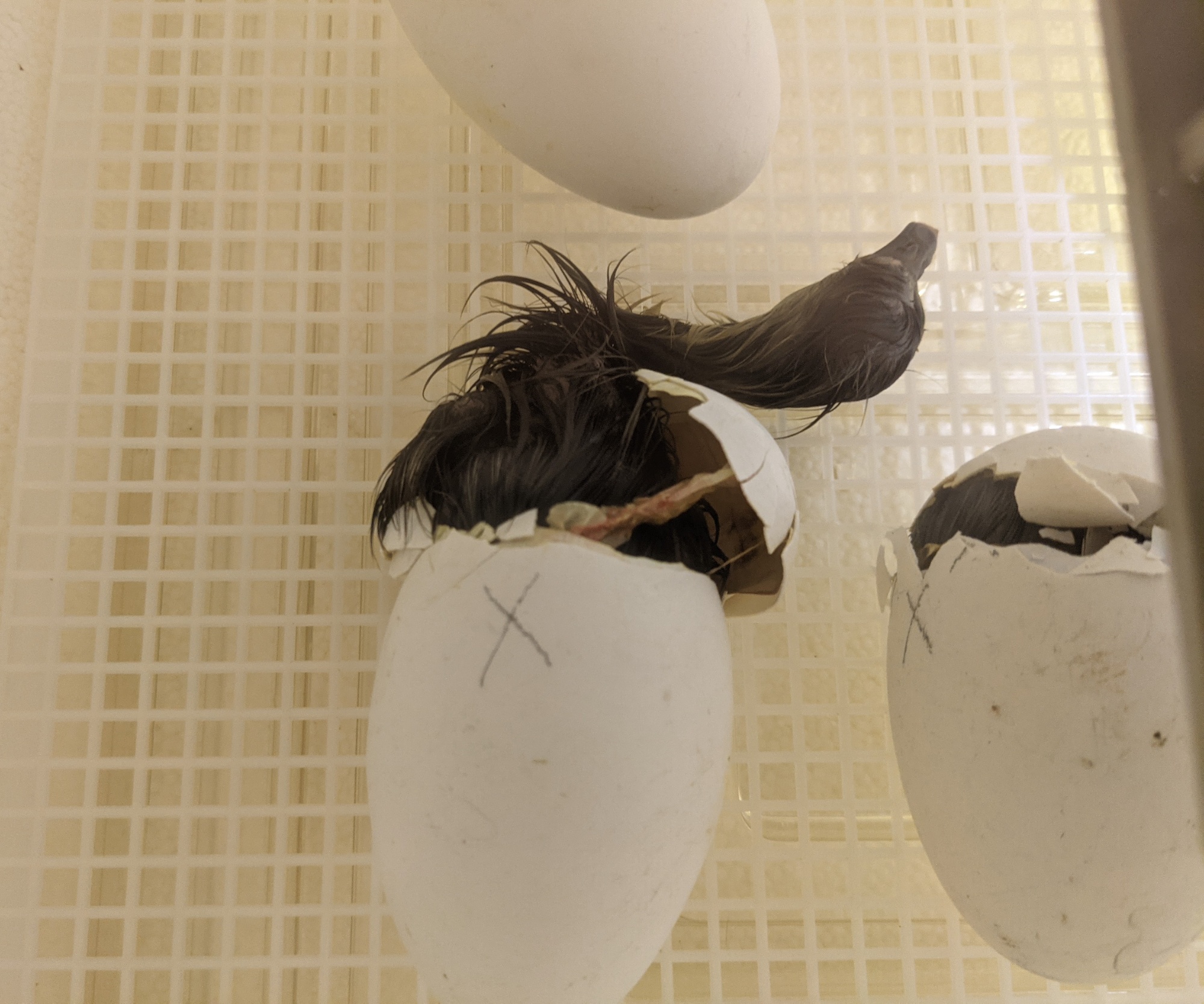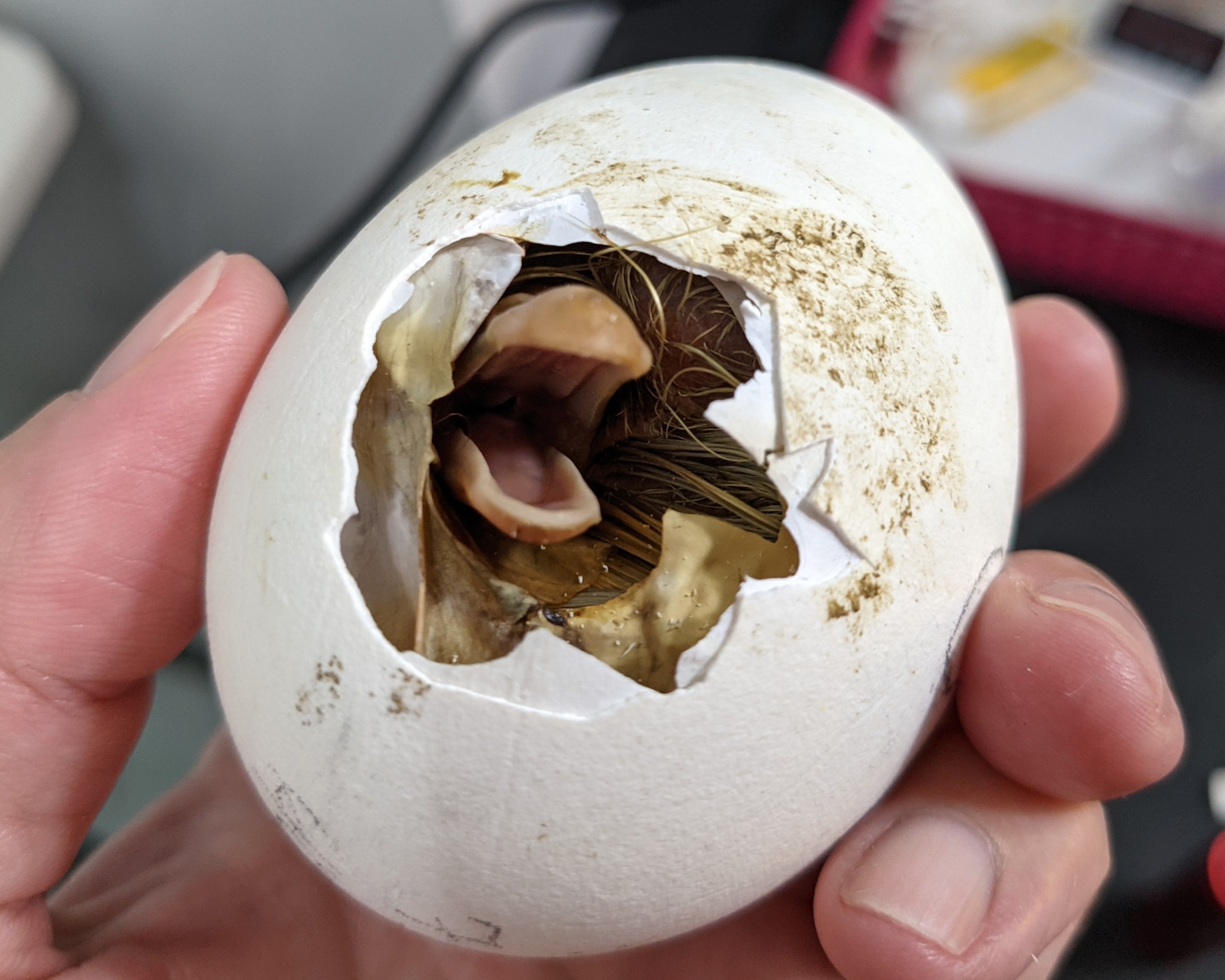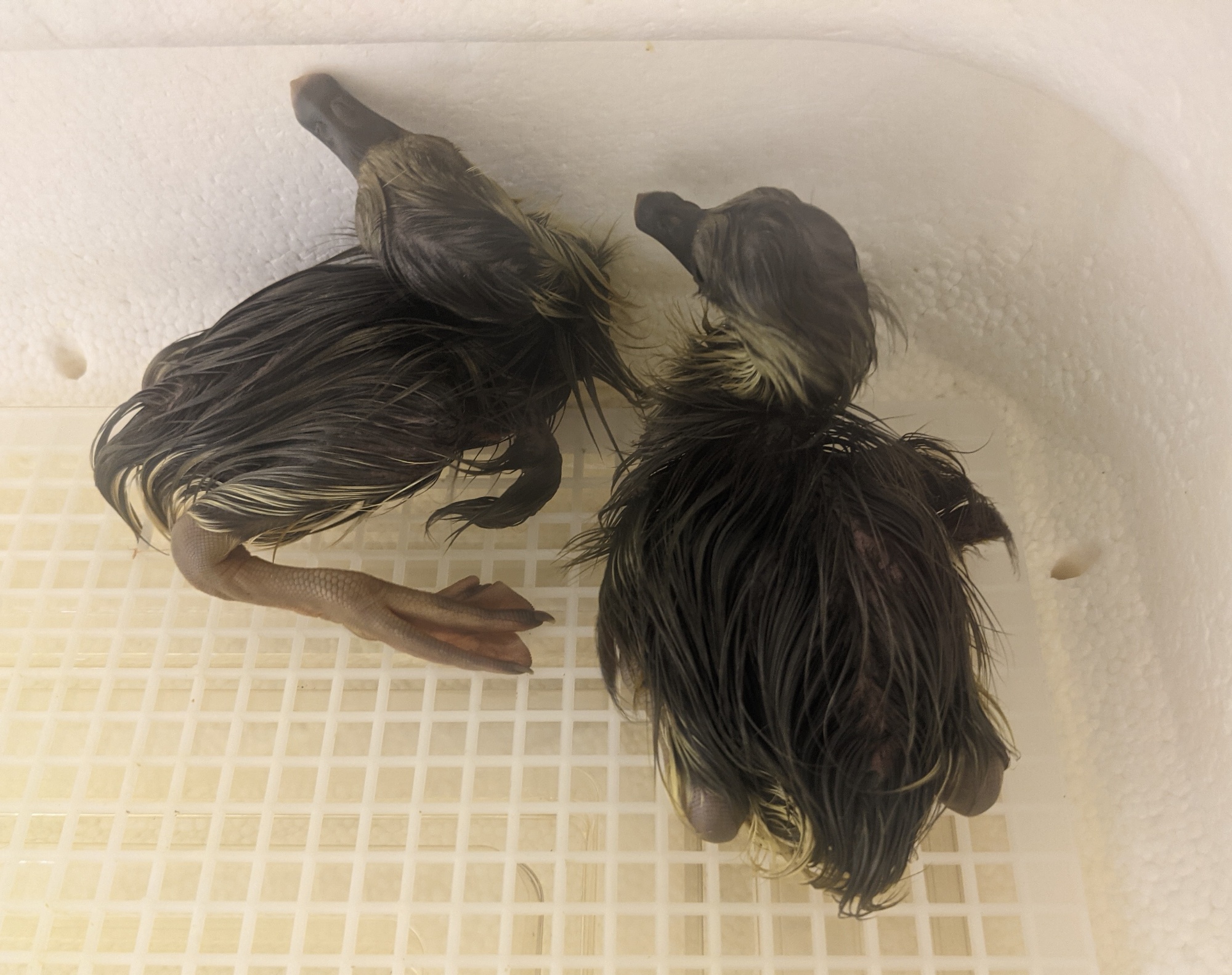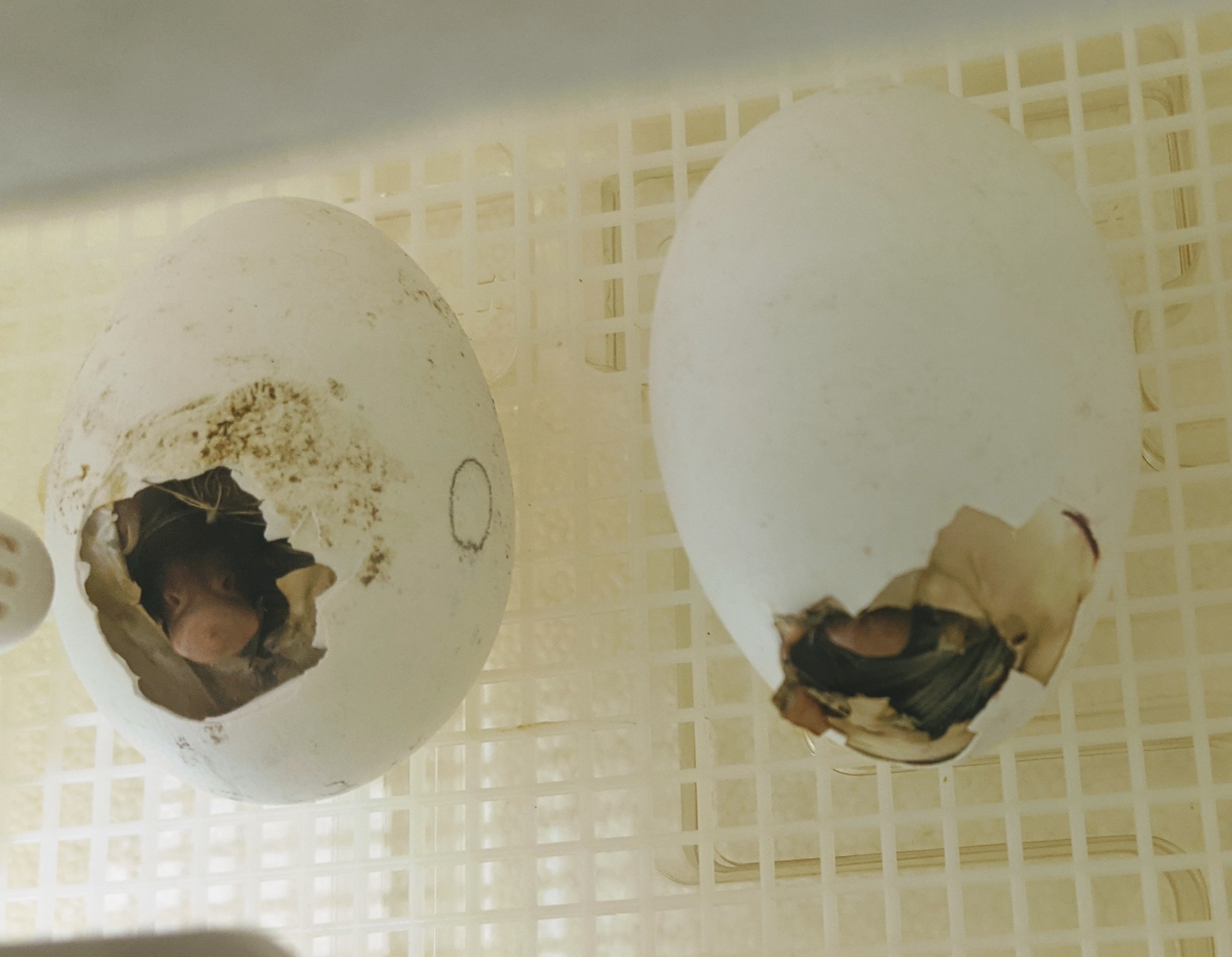
It’s finally hatching day for the last Pilgrim eggs of the season! While hatching day is exciting regardless of when it occurs during the year, this hatch is particularly poignant because, after this, there will be no more goslings until next spring. That’s a long wait.
Of the five eggs that made it to lockdown, two have now hatched and three are absorbing yolks and preparing themselves. How do you know when a gosling is still absorbing its yolk? A reliable clue is that the gosling (in the egg) will look like it’s yawning, rapidly opening and closing its bill. It can look like it’s eating something, and I suppose that, in a way, it is – its yolk, which is being pulled into its abdominal cavity. The absorbed yolk can nourish a hatchling for 48 hours after hatch, conservatively (there are estimates of up to 72 hours, but I prefer to err on the side of caution), so you can see why it’s very important that the gosling properly absorb its yolk before emerging from the egg.

The two goslings that have hatched are still wet and weak from the grueling process. Imagine yourself encased by a claustrophobia-inducing ellipse that has just a small amount of air in it, and you have to try to spin yourself around in that very tight space to position your bill to pierce the internal membrane so you can access that air. The clock is ticking – the air supply will only last so long – and you, still squeezed in there, start tapping at the shell until you break through it to reach air. Once you’ve reached air, you can rest for a bit and finish pulling your yolk into your abdomen. Then, you start breaking around the shell in a circular pattern, pushing with your feet until you push the top of the shell off. A final kick or two of your feet and you’re out of the egg. You’ve been contorted in the egg, so you have to learn to walk. But that can wait – right now, you need a nap.

The hatchlings will stay in the incubator until they’re dry and walking around. That means that they’ll flop around the incubator awkwardly, as goslings do, knocking the unhatched eggs around. While it may be difficult to watch, it doesn’t really harm the unhatched eggs – but it does make it more difficult to monitor their progress.
As goslings hatch, the already high humidity in the incubator will briefly spike as the moisture from the inside of the egg and the gosling itself is released. I like to take the opportunity at this point to open the incubator and check on the other eggs. If you’re new to artificial incubation, you’ve probably been warned to not open the incubator at all during lockdown. There are valid reasons for this caution, but it is possible to open the incubator briefly to address specific needs without endangering the remaining unhatched eggs; because I use a circulated air incubator as a hatcher, the temperature and humidity will briefly decrease but will return to previous levels quickly once the incubator lid is replaced. I may sometimes add a bit of warm water to the water wells in the incubator to bring the humidity back up quickly (if it was lower than I wanted before opening the incubator) or even spray a bit of warm water into the corners of the incubator (away from any pipped eggs) to bring the humidity back up even more quickly.
Checking the eggs periodically allows me to candle (to check for an internal pip and make a safety hole, as needed) them, move them into more optimal viewing positions, or assist a hatch. Assisting with hatching is a delicate matter, and intervening too quickly may result in a bad outcome for the hatchling. I’ve assisted with many hatches and now have the experience to be able to tell if a hatchling is truly having a problem that requires intervention, such as a malposition. Speaking of malpositions, did you notice that one of the eggs is pipped on the wrong end of the egg? That can happen when an egg is incubated with the wrong end up (which didn’t occur in this case) or when a hatchling simply gets turned around the wrong way in the egg while preparing to hatch.

So what’s the big deal with wrong end pipping? Sometimes, it’s not a big deal at all, and a hatchling will hatch without issue. Where it can become a problem is when the hatchling is unable to externally pip all the way through the egg to reach air – if the hatchling had internally pipped into the large end of the egg, a large air cell would be there; in the small end of the egg, there is no air cell, so it has to make it all the way through the shell to reach air. In the case of the egg in this hatch, the gosling did successfully go all the way through the shell to reach air. Whew. But another problem can arise when a hatchling is positioned to hatch from the small end of the egg, and it may be obvious: it’s the narrow end of the egg, making getting into proper hatching position more difficult or even impossible. Because I’ve encountered a few of these wrong end pippers, I always monitor them carefully and plan to assist, especially when it’s a gosling (chicks seem to more easily hatch from the wrong end of the egg). In this case, I’ve widened the pip hole to ensure unfettered access to air (and clear nares) and I’ve checked the membrane to see if the blood vessels have receded yet, indicating readiness to hatch.
Since the gosling still has active blood vessels in the internal membrane, it’ll be a while yet before it’s ready to hatch. It may be tempting to help at this point, but it’s too early, and doing so may be fatal to the gosling. A better approach is to occupy myself with other tasks, like writing this blog post, and check on the goslings every few hours. Waterfowl are much slower to go from pip to hatch than other types of poultry (like chickens), so the remaining goslings may not hatch until tomorrow or even the next day. Among the lessons incubation teaches, patience is a key one.
Update: all five goslings hatched and are doing well!
